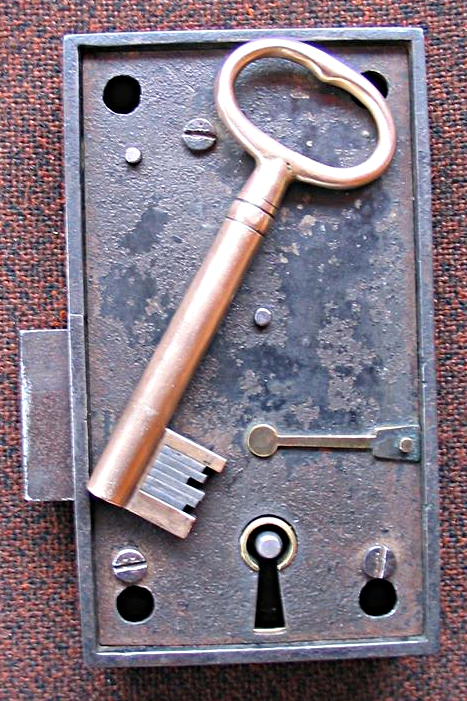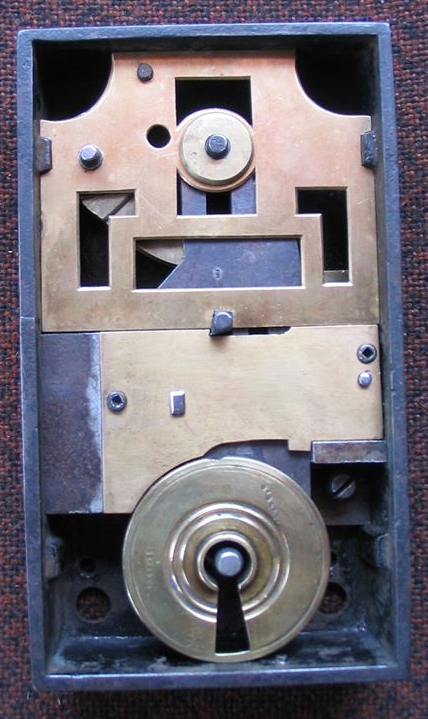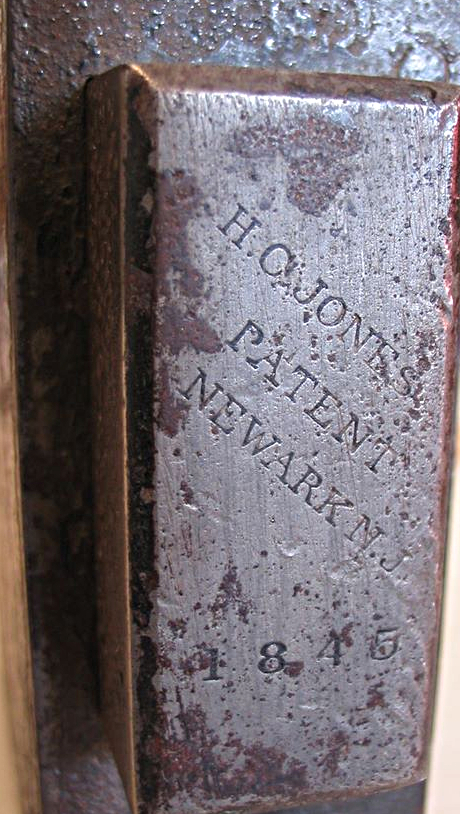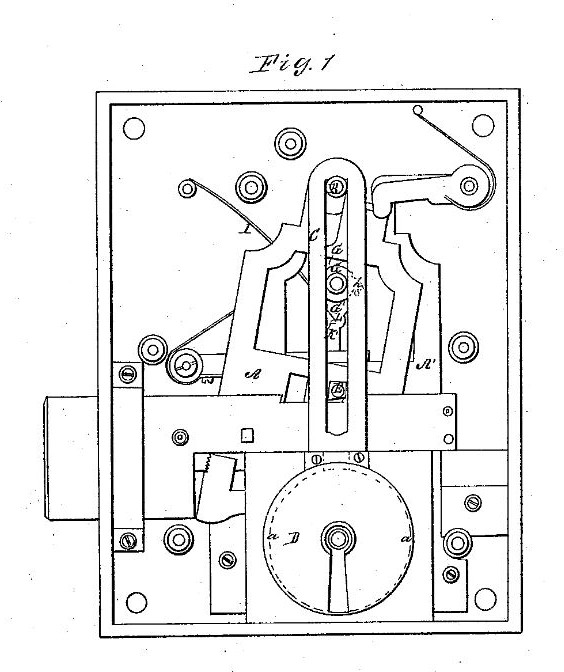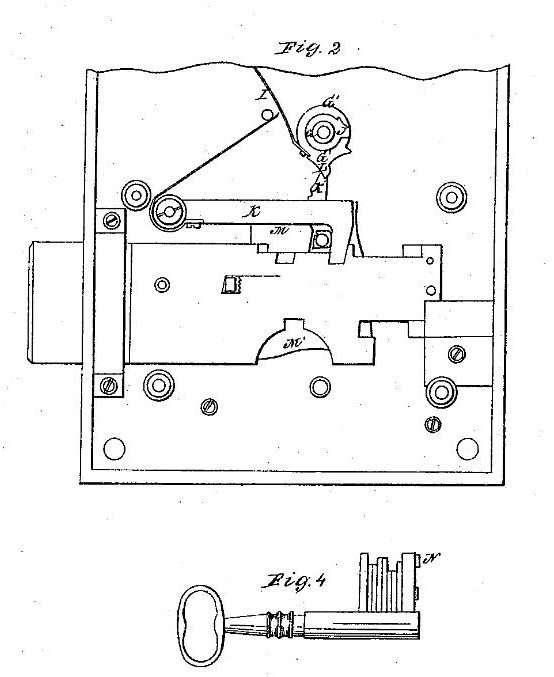Henry Jones – 1845
Images above graciously used with permission from Doug MacQueen who also crafted the skillful re-creation of the working key.
This patent by Henry Jones on April 26, 1845 introduced two main improvements to Hall’s 1843 Patent lock. The first is evident in the photos of the lock above. A revolving escutcheon was added at the keyhole to obstruct picking instruments and the viewing of the levers via mirrors and reflected light. The lock above only features one of the two improvements made by Jones in 1845.
The second of the improvements will be described using the patent images above. A vertical steel plate (C) was added at the center of the lock which moves with the guidance of a cam (G). A horizontal lever (K), which is latched into a cutout on the bolt, was added as well. The revolving escutcheon previously described (D) moves the vertical plate (C) upwards and in doing so rotates the cam (G) out of the way. With the cam out of the way, a pin, or projection, added onto the key (N) lifts the added horizontal lever (K) through its connection with a vertical plate (M and M’).
Other than these two improvements, the lock functions the same as Hall’s patent. A third set of improvements was patented by William Hall in 1845, and a fourth set of improvements was made by Henry Ritchie, an associate of Jones, in 1849. These two improvements can be viewed in the lock here.
